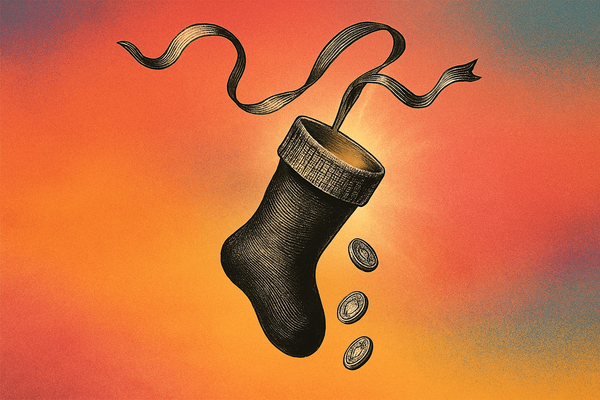Guide: How to Maximize the Value Of Your Credit Card Points
Nook's guide to maximizing the value from your credit card points for travel. We cover the target cents-per-point benchmarks for the major programs, a playbook for high value travel redemptions, and when cash back cards are a better alternative.

Let's talk about a good problem to have: you have a lot of credit card points! But every time you look at booking travel, the conversion to points is abysmal. Should you just buy a gift card?
We've all been there. In fact, I'm there right now, sitting on over 200,000 American Express points.
So what to do? Start with resisting the urge to redeem on impulse. Next, read through this guide! It will help you get the most out of your points. And then you can send us pictures from your business class lie-flat sleeper.
1. Put a Price Tag on Every Point
First off, it's important to put a price tag on your points. The formula is easy:
Cash Price ÷ Points Required = Value per Point
Keep the number handy. If it lands at or above the “ideal” benchmarks in the tables below, book with confidence. If it falls short, a different redemption will almost always beat it.
Remember, these numbers are guidelines, not guarantees. Programs can change the rules overnight.
2. Points That Pull Their Weight
Treat these figures as break-even lines. If your planned redemption lands at or above them, you can feel confident booking; if it lands below, keep looking.
United States Credit Card Points Programs
| Program | Target value (cents per point) |
|---|---|
| American Express Rewards | 2.0 |
| Chase Ultimate Rewards | 2.05 |
| Bilt Rewards | 2.05 |
| Capital One | 1.85 |
| Citi ThankYou Rewards | 1.8 |
| Wells Fargo Rewards | 1.6 |
Canadian Credit Card Points Programs
| Program | Target value (cents per point) |
|---|---|
| American Express Rewards | 2.0 |
| RBC Avion | 2.33 |
| CIBC Aventura | 2.28 |
| Aeroplan | 1.5 |
| Scene+ | 1.0 |
3. Best Practice Playbook for Travel Redemptions
a) Shop early or very late
Airlines publish schedules about 330 days in advance and release award seats at the same time. Book right then for popular dates. At the other end of the calendar, check again in the final 24 to 72 hours, when unsold premium seats often appear for points. Checking both ends of the timeline will yield much better results than sticking to the middle.
b) Hunt partner sweet spots
Credit card issuer portals are never the best place to book. Transfer your points to an airline partner and book there. This article provides a list of the best airlines to transfer Amex points to.
Examples: Chase → Virgin Atlantic for ANA business class to Tokyo at around 47,500 one-way, or Amex → Air Canada for Europe business from 60,000 off-peak.
c) Favour premium cabins when the math works
Economy awards often price near one cent per point. Business and First class can hit four cents or better, even after taxes. That being said, always check surcharges though: British Airways business can add four-figure surcharges, making a “cheap” points ticket expensive in real dollars.
d) Watch for transfer bonuses
Card issuers roll out 10% to 40% promos several times a year. This month, for example, Chase is offering a 25 % bump to Virgin Atlantic. Some programs and airlines, however, have simply stopped promos altogether. We haven't seen a Canadian based transfer bonus from Amex to Aeroplan in several years.
e) Use Aeroplan stopovers
Aeroplan lets you add one stopover to a one-way ticket for 5,000 points. The stopover can last up to 45 days and must be outside Canada and the United States. This represents an incredible opportunity to add another destination to your itinerary for very little. Sometimes, adding a stopover can even save the total number of points used for a trip.
f) Break the trip into one-ways
If round-trip space does not exist, piece it together. You can even mix alliances: fly Star Alliance out, Oneworld back.
g) New Tools to Help
A number of new companies have launched over the last few years that help with optimizing your return on a particular flight.
point.me, AwardTool, Seats.aero, and concierge-style Flightfox scan multiple programs or put a human expert on the task. They charge a fee, but saving tens of thousands of points can easily justify the fee.
h) Hedge against “pointsflation”
Programs devalue without warning. Aim to earn your points and use them within a twelve-month window rather than saving for retirement.
4. A Quiet Reality Check
Points can feel glamorous, but they are not always the sensible choice. Consider a traveler who charges $25,000 a year to their credit card and could use a two-per-cent cash-back card. That card yields $500 you can spend anywhere, any time.
To beat $500 with points you would need, for example, 25,000 points worth two cents each and an award seat with no extras. If your travel plans are flexible and you enjoy the hunt, that is possible. If you fly economy once a year on fixed dates, cash back keeps life simpler and often richer.
Ask yourself three questions:
- How often will I redeem? Infrequent flyers rarely access the highest-value sweet spots.
- Do I have flexibility? Fixed vacation windows reduce award seat availability.
- Is the process enjoyable? If charts and transfer bonuses sound like homework, take the cash and move on.
There is no shame in Team Cash Back. What matters is squeezing the most long-term value from your spending.
Key Takeaway
Treat points like a high-yield currency, not a coupon. Run the value-per-point math every time, avoid redemptions below your target rate, and lean on partner transfers, bonuses and smart timing. Follow that playbook and even modest monthly spending can turn into remarkably comfortable seats at cruising altitude. ✈️





